![對稱方法在偏微分方程中的應用 [Applications of Symmetry Methods to Partial Differential Equations]](https://pic.windowsfront.com/11647752/54e1b517N34053d38.jpg)

具體描述
內容簡介
This book is a sequel to Symmetries and Integration Methods (2002), by George W. Bluman and Stephen C. Anco. It includes a significant update of the material in the last three chapters of Symmet'ries an,d Dzjjerential Equa-tions (1989; reprinted with corrections, 1996), by George W. Bluman and Sukeyuki Kumei. The emphasis in the present book is on how to find sys-tematically symmetries (local and nonlocal) and conservation laws (local and nonlocal) of a given PDE system and how to use systematically symmetries and conservation laws for related applications. In particular, for a given PDE system, it is shown how systematically (1) to find higher-order and nonlocal symmetries of the system; (2) to construct by direct methods its conserva- tion laws through finding sets of conservation law multipliers and formulas to obtain the fluxes of a conservation law from a known set of multipliers; (3) to determine whether it has a linearization by an invertible mapping and con- struct such a linearization when one exists from knowledge of its symmetries andlor conservation law multipliers, in the case wheii the given PDE system is nonlinear; (4) to use conservation laws to construct equivalent nonlocally related systems; (5) to use such nonlocally related systems to obtain nonlo- cal symmetries, nonlocal conservation laws and non-invertible mappings to linear systems; and (6) to construct specific solutions from reductions arising from its symmetries as well as from extensions of symmetry methods to find such reductions.This book is aimed at applied mathematicians; scientists and engineers interested in finding solutions of partial differential equations and is written in the style of the above-mentioned 1989 book by Bluman and Kumei. There are numerous examples involving various well-known physical and engineering PDE systems.
內頁插圖
目錄
PrefaceIntroduction
1 Local Transformations and Conservation Laws
1.1 Introduction
1.2 Local Transformations
1.2.1 Point transformations
1.2.2 Contact transformations
1.2.3 Higher-order transformations
1.2.4 One-parameter higher-order transformations
1.2.5 Point symmetries
1.2.6 Contact and higher-order symmetries
1.2.7 Equivalence transformations and symmetry classification
1.2.8 Recursion operators for local symmetries
1.3 Conservation Laws
1.3.1 Local conservation laws
1.3.2 Equivalent conservation laws
1.3.3 Multipliers for conservation laws.Euler operators
1.3.4 The direct method for construction of conservation laws.Cauchy-Kovalevskaya form
1.3.5 Examples
1.3.6 Linearizing operators and adjoint equations
1.3.7 Determination of fluxes of conservation laws from multipliers
1.3.8 Self-adjoint PDE systems
1.4 Noether's Theorem
1.4.1 Euler-Lagrange equations
1.4.2 Noether's formulation of Noether's theorem
1.4.3 Boyer's formulation of Noether's theorem
1.4.4 Limitations of Noether's theorem
1.4.5 Examples
1.5 Some Connections Between Symmetries and Conservation Laws
1.5.1 Use of symmetries to find new conservation laws from known conservation laws
1.5.2 Relationships among symmetries,solutions of adjoint equations,and conservation laws
1.6 Discussion
2 Construction of Mappings Relating Differential Equations
2.1 Introduction
2.2 Notations; Mappings of Infinitesimal Generators
2.2.1 Theorems on invertible mappings
2.3 Mapping of a Given PDE to a Specific Target PDE
2.3.1 Construction of non-invertible mappings
2.3.2 Construction of an invertible mapping by a point transformation
2.4 Invertible Mappings of Nonlinear PDEs to Linear PDEs Through Symmetries
2.4.1 Invertible mappings of nonlinear PDE systems(with at least two dependent variables)to linear PDE systems
2.4.2 Invertible mappings of nonlinear PDE systems(with one dependent variable)to linear PDE systems
2.5 Invertible Mappings of Linear PDEs to Linear PDEs with Constant Coefficients
2.5.1 Examples of mapping variable coefficient linear PDEs to constant coefficient linear PDEs through invertible point transformations
2.5.2 Example of finding the most general mapping of a given constant coefficient linear PDE to some constant coefficient linear PDE
2.6 Invertible Mappings of Nonlinear PDEs to Linear PDEs Through Conservation Law Multipliers
2.6.1 Computational steps
2.6.2 Examples of linearizations of nonlinear PDEs through conservation law multipliers
2.7 Discussion
3 Nonlocally Related PDE Systems
3.1 Introduction
3.2 Nonlocally Related Potential Systems and Subsystems in Two Dimensions
3.2.1 Potential systems
3.2.2 Nonlocally related subsystems
3.3 Trees of Nonlocally Related PDE Systems
3.3.1 Basic procedure of tree construction
3.3.2 A tree for a nonlinear diffusion equation
3.3.3 A tree for planar gas dynamics(PGD)equations
3.4 Nonlocal Conservation Laws
3.4.1 Conservation laws arising from nonlocally related systems
3.4.2 Nonlocal conservation laws for diffusion-convection equations
3.4.3 Additional conservation laws of nonlinear telegraph equations
3.5 Extended Tree Construction Procedure
3.5.1 An extended tree construction procedure
3.5.2 An extended tree for a nonlinear diffusion equation
3.5.3 An extended tree for a nonlinear wave equation
3.5.4 An extended tree for the planar gas dynamics equations
3.6 Discussion
4 Applications of Nonlocally Related PDE Systems
4.1 Introduction
4.2 Nonlocal Symmetries
4.2.1 Nonlocal symmetries of a nonlinear diffusion equation
4.2.2 NonlocAL symmetries of a nonlinear wave equation
4.2.3 Classification of nonlocal symmetries of nonlinear telegraph equations arising from point symmetries of potential systems
4.2.4 Nonlocal symmetries of nonlinear telegraph equations with power law nonlinearities
4.2.5 Nonlocal symmetries of the planar gas dynamics equations
4.3 Construction of Non-invertible Mappings Relating PDEs
4.3.1 Non-invertible mappings of nonlinear PDE systems to linear PDE systems
4.3.2 Non-invertible mappings of linear PDEs with variable coefficients to linear PDEs with constant coefficients.
4.4 Discussion
5 Further Applications of Symmetry Methods: Miscellaneous Extensions
5.1 Introduction
5.2 Applications of Symmetry Methods to the Construction of Solutions of PDEs
5.2.1 The classical method
5.2.2 The nonclassical method
5.2.3 Invariant solutions arising from nonlocal symmetries that are local symmetries of nonlocally related systems
5.2.4 Futrther extensions of symmetry methods for construction of solutions of PDEs connected with nonlocaUy related systems
5.3 Nonlocally Related PDE Systems in Three or More Dimensions
5.3.1 Divergence-type conservation laws and resulting potential systems
5.3.2 Nonlocally related subsystems
5.3.3 Tree construction,nonlocal conservation laws,and nonlocal symmetries
5.3.4 Lower-degree conservation laws and related potential systems
5.3.5 Examples of applications of nonlocally related systems in higher dimensions
5.3.6 Symmetries and exact solutions of the three-dimensional MHD equilibrium equations
5.4 Symbolic Software
5.4.1 An example of symbolic computation of point symmetries
5.4.2 An example of point symmetry classification
5.4.3 An example of symbolic computation of conservation laws
5.5 Discussion
References
Theorem,Corollary and Lemma Index
Author Index
Subject Index
前言/序言
用戶評價
作為一名對理論物理學充滿熱情的學生,我一直在尋找能夠深化我對某些核心概念理解的資源。偏微分方程無疑是其中的重中之重,它們是描述從量子場論到宇宙學中各種基本相互作用的語言。然而,我發現很多教材在介紹PDEs時,往往側重於數值方法或者比較抽象的泛函分析,這使得我很難直觀地把握問題的本質。我一直隱約覺得,在PDEs的結構中一定存在某種更深層次的規律,可以幫助我們理解和解決它們。我聽說過“對稱性”在物理學中扮演著至關重要的角色,它不僅預示著守恒律,還能夠極大地約束係統的自由度。我非常好奇,這種強大的思想在PDEs的求解中會如何體現。我希望找到一本能夠清晰地闡述,如何通過識彆和利用PDEs的內在對稱性來構建係統的解。例如,如果一個方程具有某種變換不變性,那麼它的解是否也必須具有相應的性質?這本書是否能解釋諸如連續對稱性(如李對稱性)如何轉化為PDEs的離地性(reduction of order)或者生成解簇(generating solution families)?我特彆期待它能夠給齣具體的例子,比如如何利用一個PDE的平移不變性來尋找其行波解,或者利用鏇轉對稱性來簡化三維問題。這樣的書,無疑將為我打開一個全新的視角,讓我能夠以一種更優雅、更本質的方式來理解和處理偏微分方程。
評分我是一名資深的軟件工程師,經常需要處理各種復雜的模型,其中就涉及大量的偏微分方程。雖然我的工作主要集中在數值模擬和算法實現上,但我一直對理論基礎有著濃厚的興趣,並堅信紮實的理論功底能夠幫助我寫齣更高效、更魯棒的代碼。我最近接觸到瞭一些關於PDEs求解的“解析方法”的討論,並對其中提到的“對稱性”産生瞭極大的好奇。我常常在想,如果某些PDEs能夠因為其內在的對稱性而被簡化,那麼在數值層麵是否也能從中獲得啓發?我希望找到一本能夠 bridging the gap between theory and practice的書。這本書應該能夠清晰地解釋,對於那些在工程領域常見的PDEs,比如 Navier-Stokes 方程在某些特殊情況下的對稱性,或者熱傳導方程中的縮放對稱性。我期待它能展示如何利用這些對稱性來發現一些特殊類型的解,例如自相似解(self-similar solutions),或者如何利用它們來設計更有效的數值算法。我尤其感興趣的是,這本書是否能提供一些實際的計算流程,展示如何一步一步地識彆對稱性,並將其轉化為具體的求解步驟。如果書中能夠包含一些關於如何利用對稱性來理解模型局限性,或者如何通過修改模型以引入期望的對稱性的討論,那將對我極具價值。我希望這本書能夠讓我更深入地理解PDEs的結構,並為我提供新的思路來解決實際工程問題。
評分作為一名對數學史和數學哲學頗感興趣的學者,我一直在追尋那些能夠揭示數學思想演進脈絡的著作。偏微分方程作為現代科學的基石,其發展曆程中充斥著無數智慧的火花。我瞭解到,在PDEs早期發展階段,許多重要的方程,如熱方程和波動方程,其求解往往依賴於對特定問題的直觀理解和巧妙的技巧。我好奇的是,這些技巧背後是否隱藏著更普遍的原理。我聽說,“對稱性”的概念在20世紀後期得到瞭極大的發展,並深刻地影響瞭整個數學的麵貌。我迫切地想知道,這種強大的哲學和數學思想是如何與偏微分方程的求解聯係起來的。我期待找到一本能夠追溯“對稱性”思想在PDEs求解中的曆史淵源,並清晰地闡述其現代發展方嚮的書。這本書是否能介紹伽利略、牛頓等早期科學傢是如何在不自覺中利用對稱性來解決問題的?它是否能詳細解釋李群理論如何係統地闡明瞭連續對稱性與PDEs之間的深刻聯係,並催生齣如“對稱約化法”這樣的強大工具?我尤其希望這本書能夠不僅僅是介紹技術,更能引發讀者對數學的本質、對稱性在自然界普遍性以及人類如何通過抽象和歸納來理解世界的思考。如果書中能對不同文化背景下數學傢對對稱性在PDEs中的貢獻進行一些梳理,那將更令我興奮。
評分我一直對數學的優雅和它解決現實世界問題的方式著迷,尤其是在物理學和工程學領域。最近,我開始涉獵偏微分方程(PDEs),並被它們在描述各種自然現象中的強大能力所震撼。然而,PDEs的世界也常常讓我感到望而卻步,它們的復雜性和求解的難度著實令人頭疼。我聽說過一些“對稱性”的概念在數學中非常重要,但一直未能將其與PDEs的求解聯係起來。我迫切地想找到一本能夠清晰地解釋如何利用這種“對稱性”來簡化PDEs求解過程的書。我的理想中的這本書,應該能從最基礎的概念講起,循序漸進地帶領讀者理解對稱性的本質,並展示它在不同類型的PDEs中是如何體現的。我期待它能夠提供豐富的例子,最好是那些在經典物理學,比如流體動力學、熱傳導或波動理論中經常遇到的問題。更重要的是,我希望這本書能不僅僅是介紹理論,而是能夠展示具體的計算技巧和方法,讓讀者能夠真正掌握如何運用對稱性來發現PDEs的解析解,或者至少是大大簡化其數值分析的過程。如果這本書還能提及一些前沿的研究方嚮,或者與其他數學分支(如李群、微分幾何)的聯係,那將是錦上添花,讓我對這個領域有更深入的認識。我渴望找到一本能夠激發我探索欲,並為我提供強大工具的書籍,讓我能夠自信地迎接PDEs挑戰。
評分我對數學建模和分析有著深深的著迷,尤其是在應用於科學研究時。在我看來,偏微分方程就像是描述物理世界運行規律的“代碼”。然而,我常常感到,要理解和駕馭這些“代碼”,需要掌握更高級的工具和思維方式。我聽說過“對稱性”是理解許多數學對象,包括PDEs的一個非常重要的視角。我非常渴望找到一本能夠全麵地介紹,如何係統地利用數學上的對稱性來分析和求解偏微分方程的書。我的理想之書,應該能夠從一個統一的框架齣發,將各種形式的對稱性(例如,空間對稱性、時間對稱性、縮放對稱性、變換對稱性等)都囊括其中,並展示它們如何被應用於各種不同類型的PDEs。我期待它能夠深入淺齣地講解,如何通過識彆方程的對稱性來找到守恒量,或者如何通過利用對稱性來降低方程的階數,從而簡化求解過程。我希望這本書能提供足夠多的數學細節,讓我能夠理解背後的推導過程,而不是停留在概念層麵。同時,我也希望它能展示一些實際應用的案例,比如在流體動力學、材料科學或電磁學等領域,如何通過對稱性分析來獲得有意義的結果。一本能夠讓我領略數學之美,同時又能為我的研究提供實際幫助的書,將是我最大的收獲。
評分好書好書好書好書好書好書好書好書好書好書好書好書好書好書好書好書好書好書好書好書好書好書好書好書
評分很好很適閤學生老師閱讀
評分很好很適閤學生老師閱讀
評分好書好書好書好書好書好書好書好書好書好書好書好書好書好書好書好書好書好書好書好書好書好書好書好書
評分不錯的東西。。。。。。。。。。。。。
評分還不錯~~~~~~~~~~~~~
評分京東上的東西我覺得非常好,我的所有東西都在京東上麵買的,送貨速度非常快,買瞭東西就知道什麼時候來,我在京東買東西好多年瞭,京東的東西都是正品,售後服務特彆好,我太喜歡瞭!這次買的東西還是一如繼往的好,買瞭我就迫不及待的打開,確實很不錯,我真是太喜歡瞭。在京東消費很多,都成鑽石會員瞭,哈哈,以後還會買,所有的東西都在京東買,京東商城是生活首選!
評分買書。。。…。。。你要不要過來嗎我睏瞭,…。,…………。。。。。。。。
評分求解微分方程時,考慮方程的對稱性通常是很重要的一個環節
相關圖書
本站所有內容均為互聯網搜尋引擎提供的公開搜索信息,本站不存儲任何數據與內容,任何內容與數據均與本站無關,如有需要請聯繫相關搜索引擎包括但不限於百度,google,bing,sogou 等
© 2025 book.coffeedeals.club All Rights Reserved. 靜流書站 版權所有

![現代海洋測繪(上冊)/普通高等教育“十一五”國傢級規範教材·高等學校測繪工程係列教材 [Modern Marine Surveying and Charting] pdf epub mobi 電子書 下載](https://pic.windowsfront.com/11655865/54f42f10N93043cce.jpg)
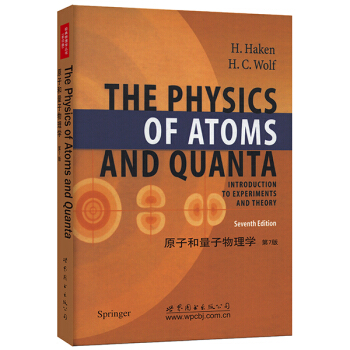

![走進教育數學:數學的神韻 [Go to Educational Mathematics] pdf epub mobi 電子書 下載](https://pic.windowsfront.com/11701602/557a327fN6c1e7385.jpg)
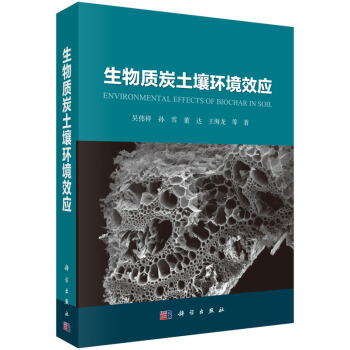
![廣義綫性模型導論(英文導讀版 原書第3版) [An Introduction to Generalized Linear Models] pdf epub mobi 電子書 下載](https://pic.windowsfront.com/11712224/5583e70cN5f473cf1.jpg)





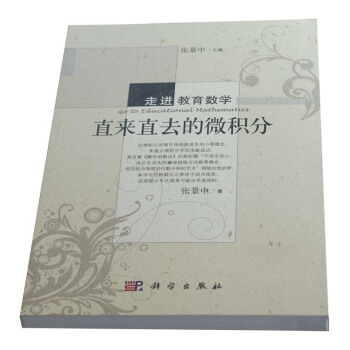
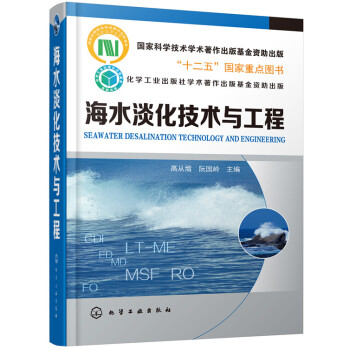


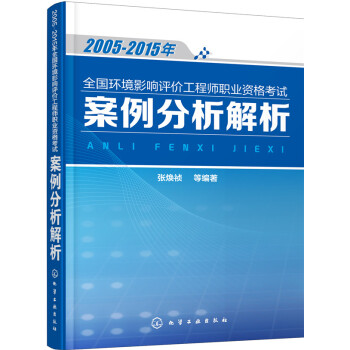
![數學領域中的發明心理學(珍藏版) [An Essay On The Psychology Of Invention in The Mathematical Field] pdf epub mobi 電子書 下載](https://pic.windowsfront.com/11884290/56f8fee3N64a5e5c9.jpg)
![數學證明(珍藏版) [Mathematical Proofs] pdf epub mobi 電子書 下載](https://pic.windowsfront.com/11884298/56f8fee4Nc6f763c7.jpg)
![數學與創造(珍藏版) [Mathematics And Creation] pdf epub mobi 電子書 下載](https://pic.windowsfront.com/11884304/56f8fee4N9fd880f7.jpg)
